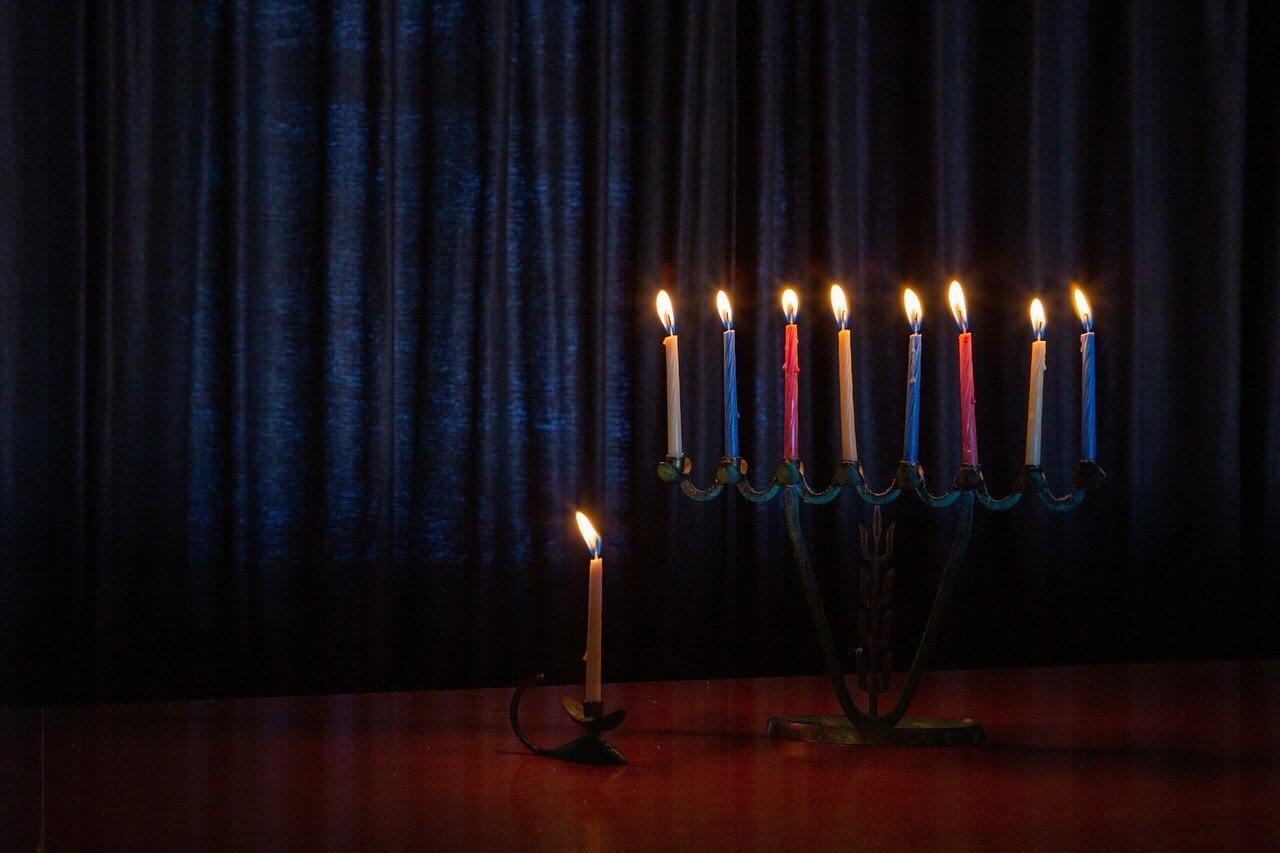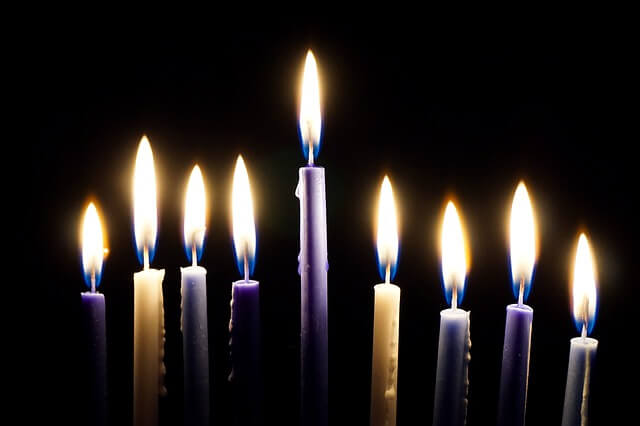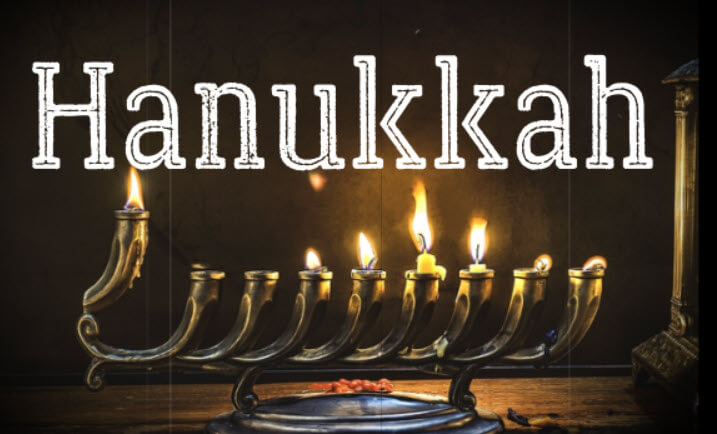On Chanukah, the previous Rebbe said to his chassidim, 1 “We must listen carefully to what the candles say.”
In fact, the message of the Chanukah lights affects the full scope of our Gd service throughout the year, because “A mitzvah is a lamp and the Torah is light.” 2 Although each mitzvah is a lamp that illuminates the darkness of our material world, this illumination manifests itself more in those mitzvot that are associated with visible light.
The spiritual implications of the Chanukah lights are reflected in the halachic details that regulate the fulfillment of the mitzvah. To begin with, the Chanukah lights should be lit after sunset and should burn at night.3 In addition, they should be placed “outside the entrance to the house” 4, which shows that they are mainly intended to illuminate the public domain instead of the house itself.
The darkness of the night and the public domain represent the aspects of our material existence that obscure the Divine light and prevent us from appreciating the omnipresent unity of Gd. By lighting Chanukah candles, we generate light that raises the material realm and reveals its Divine nature.

No other mitzvah so directly raises those aspects of material existence that conceal the Divine. The positive commandments of the Torah affect only those things that by nature are apt to be elevated. For this reason, positive commandments can not be fulfilled with material that is not kosher.5 Even the prohibitions of the Torah, the commandments that refer to material elements that can not be refined, do not raise these negative forces; The purpose of these prohibitions is simply to deny their influence. Chanukah candles, however, are able to refine and elevate the darkness of the public domain, making it shine with Divine light.
Make darkness shine
The unique power of Chanukah lights is linked to the nature of the miracle they commemorate. The miracle of Chanukah took place in a time of darkness, when the Greeks, who had conquered the Land of Israel, tried to impose their culture on its inhabitants. Despite the assimilating influence of Hellenistic Jews, the Maccabees were able to instill in the Jewish people a spirit of mesirus nefesh (self-sacrifice) and teshuva (return to Gd). This inspired them to fight against the Greeks, defeat them and rededicate the Beit HaMikdash. Since the Jewish victory involved the transformation of darkness into light, the Chanukah lights that commemorate it also have this power.
And they teach us that when we face darkness, we should not resign ourselves to it. Nor can we be happy with lighting our own homes. Instead, we should reach out and spread the light as much as we can, until the public domain also lights up.
Transcending even spiritual personal interest
The Hanukkah hymn that begins Haneiros Hallalu6 records another halachic requirement: “These lights are holy and we are not allowed to use them, just to look at them”. That is, although Chanukah candles should burn at night, when their light is useful, we can not use it. To guarantee this, we light an additional candle, the shamash, and place it on top of the others, so that any unintended benefit of the light is attributable to the shamash7 and not to the lamps lit for the execution of the mitzvah.
These laws reflect the unique nature of this mitzvah. Although each mitzvah earns a reward, in some cases the reward is spiritual, while in others it also manifests itself in the material world. The visible light of the Chanukah candles indicates that the positive effects generated by this mitzvah are evident in both our material and spiritual worlds.
However, just as we do not use the light of Chanukah lights for mundane purposes, our objective in performing this mitzvah is not a material reward. We fulfill it only because “you have sanctified us with your commandments and ordered us” 8, without thinking about the reward or any other ulterior motive. This level of performance, avodah lishmah (“divine service by itself”), is the highest that can be achieved through our own spiritual efforts.

As much human behavior, even our divine service may be motivated by a desire for spiritual rewards, if not material ones. The lights of Chanukah teach us to transcend our tendencies towards our own interest and we dedicate ourselves to serving God only for him. The Chanukah lights, which burn in the darkness of the night, also demonstrate that we can reach this advanced level of divine service, not only during the day (which symbolizes manifest dignity), but also at times when it is necessary to strive to transform the darkness around us.
Reaching the Heights of Divine Service
Another halachic consideration: the custom in all Jewish homes is to add one candle each night to the number of candles lit the night before. This custom is universal, although technically, the minimum halachic requirement can be met by lighting only one candle on each of the Chanukah nights.10 Our practice thus follows the mehadrin style (“those who are lovingly finicky”) and who beautifies the mitzvah avoiding the expense and effort when observing it.
In addition, there is a higher level of mitzvah fulfillment, the way of those who are mehadrin min hamehadrin (“the most punctilious of all”), who show a level of hydride that exceeds the aforementioned mehadrin level.
Carrying out the mitzvah on the upper level of mehadrin min hamehadrin involves adding a new candle every night for each member of the family.11 Significantly, today it is a common practice for everyone to turn on the Chanukah lights in this way.12 Throughout the Jewish world, even in circles where the observance of many other mitzvos leaves room for improvement, this mitzvah is commonly observed at the level of mehadrin min hamehadrin.
Our ability to fulfill this mitzvah in this way was bequeathed to us by the Maccabees. When they returned to dedicate the Beit HaMikdash, the law of the Torah would have allowed them to light the golden Menorah with ritually impure oil. Because the obligation to light the Menorah in a state of ritual purity, as we also find with respect to communal offerings, is waived when there is no alternative.13 The Maccabees, however, refused to be satisfied with the minimal fulfillment of the mitzvah. . Determined to turn on the Menorah in the most perfect way possible, as befits mehadrin min hamehadrin, they decided to use only pure oil.
For this to be possible, since the preparation of fresh oil took eight days, Gd intervened in the natural order and performed the miracle of Chanukah: a single crusade with enough pure olive oil for one day remained burning for eight days. We commemorate this miracle by following the example of the Maccabees and lighting our Chanukah lights in the manner of mehadrin min hamehadrin.
To continuously increase the light
Adding a new Hanukkah candle every night teaches us that every day we must increase our efforts to spread light throughout the world. Although we illuminated our surroundings the night before, even at the level of mehadrin min hamehadrin, we can not rest happy. As our Sages explain, 14 lighting the Chanukah candles exemplifies the principle: “Always advance higher in sacred matters.”
Beginning with the second night of Chanukah (the first time we add a candle), we express this principle for a whole week, increasing the number of candles each night. One week is a full-time cycle15 that potentially contains all possible situations that a person can encounter. Adding a new light to each Chanukah night demonstrates and reinforces the commitment to continually progress, no matter what happens.

The lessons we learn from the Chanukah lights should be applied in all aspects of our lives. Every day should lead us to greater growth and create new opportunities to spread the Divine light in our homes and in the world. Understood in this way, the lighting of Chanukah lights will serve as a catalyst to produce the supreme light that will illuminate the world in the Age of Redemption.
Chanukah is linked to the Age of Redemption by the number eight, which is both the number of nights in which we light the Chanukah candles and a number intimately associated with that maximum age.16 Our lighting of the Chanukah candles anticipates and precipitates the Era when “a priest will appear in Zion” 17 and will light the Menorah in the Beit HaMikdash. Let this take place in the immediate future.